New food labeling bill introduced...
carolb_w_fl_coastal_9b
8 years ago
Featured Answer
Comments (25)
grainlady_ks
8 years agomustangs81
8 years agoRelated Discussions
How to introduce tent camping to newbies?
Comments (15)Well, this is a bit off the subject, but, when i was a kid of ten or so, my Dad and Grand-father would take me and my brother on a camping trip, up to Pymatuning Reservoir, in North-western Pennsylvania, for a week of fishing and row-boating, and seeing the sights. (This was around 1933 to 1940.) We had two old WW I Army tents, and cots, blankets, a gasoline stove, cooking utensils, plates, etc. We didn't have an ice chest. My Dad would dig a hole in the creek bank, and we'd keep the perishables there, in the cool water, in a bucket, with a lid. We'd rent a row-boat, and Daddy and me and my younger Brother would go out on the lake and fish. We'd spend a week there, and had lots of fun. We'd turn in at dusk, since we didn't have a big lantern. One night, there was a great commotion outside our tent, and the head-lights of our car were shining into our tent and the horn was blowing loudly! (Around 3 a.m!) I awoke, and asked what was happening. Daddy shouted:"There are skunks in your tent"! Uh-Oh!? "Be very still"! I didn't move, and could hear rustling under my brother's cot, so i managed a peek. And there were two skunks worrying an old half empty can of fish-bait! WOO-HOO! Well, they finally "licked the platter clean", so to say, and ran off. Daddy finally quit blowing the horn, and it all cooled down then. Also, when my wife and i went up to Hammonasset State park, in connecticut, we set up the camper, then went in to town to buy some groceries. As we drove back into the park, we saw 3 skunks walking into a tent that was set up nearby. We watched to see if anybody came running out, but no one did. Then, a car pulled in and four girls got out and started for the tent!! I hollered and told them about the skunks---woo-hoo, they hollered, ran out, got into their car and drove madly away! Don't know if they ever came back! Hammonasset was a nice park to visit. We went there several times. It was close to where our son lived. We went there one 4th. of July when the holiday fell on a Saturday. This was on Wednesday. the park management said we could camp there, if we left on Thursday, as the weekenders would need the space. We agreed, and we left....See MoreSynthetic genes in the brave new world of food crops
Comments (26)This letter to the journal Nature outlines the safety risk of antibiotic resistance due to horizontal gene transfer from GMOs and points out that this is not the only risk that needs to be urgently addressed by the authorities. ------ Ampicillin threat leads to wider transgene concern Sir: We are concerned by the suggestion, in your Editorial "Don't rely on Uncle Sam" (Nature 434, 807; 2005), that the US Food and Drug Administration does not consider the presence of the ampicillin-resistance gene in Syngenta's unapproved variety of genetically modified Bt10 maize to represent a safety problem. This is not the view of the UK government's scientific advisers (the DEFRA Antimicrobial Resistance Coordination Group), who state that some important veterinary pathogens remain susceptible to ampicillin (K. L. Goodyear et al. J. Antimicrob. Chemother. 54, 959; 2004). They state that there is "extremely low or no detected resistance in certain bacterial species", so that "any occasional transfer of resistance genes to these organisms would be a very significant event". If, as a result of such horizontal gene transfer, it became necessary to use more modern antimicrobials to treat animal disease, they write, "then there could be significant consequences for the consumer through the food chain". The risk of horizontal gene transfer from genetically modified organisms (GMOs) is not a theoretical one. One study found that, after Bt genes in plasmid form were incubated in the saliva in a sheep's mouth for a few minutes, they could still transform Escherichia coli bacteria so that they developed antibiotic resistance (P. S. Duggan et al. Br. J. Nutr. 89, 159$B!](B166; 2003). In addition, it is worth noting that the ampicillin-resistance gene in Bt10 maize and other genetically modified crops is a remnant of the bacterial plasmid inserted into these varieties, and would therefore function very efficiently if taken up by bacteria as a result of horizontal gene transfer. Once the Bt10 maize incident has been dealt with, we feel there should be a review of the general question of horizontal gene transfer from GMOs. There is no reason to believe that any health implications are confined to antibiotic-resistance marker genes; they could, for example, equally apply to the inserted Bt toxin genes present in all genetically modified Bt crops. However, the transfer of antibiotic resistance is the only such risk currently being addressed by the authorities that regulate GMOs. We consider that the case-by-case approval approach used by the authorities does not adequately address such problems, which are common to all GMOs. Gundula Azeez Soil Association, 40-56 Victoria Street, Bristol BS1 6BY, UK...See MoreAlternate-Day Fasting/Introducing myself
Comments (19)Sorry for not posting for so long. I didn't think this thread was still active. But I see that it is, so I'll keep checking back. Eloise: In an office full of people, I'd feel a little silly getting up and jogging in place or doing other aerobics. :) But I do manage to go for a brisk walk on one or two of my breaks, depending whether it's an eating day or not. I've asked the boss about putting an exercise bike or treadmill in the staff lounge area, but it's not really practical due to lack of shower facilities, etc. Nobody wants a stinky co-worker. (My walks are brisk but not so strenuous that I sweat heavily.) bpollen: I mention giving up smoking on my blog, near the beginning of February, when it was my one year anniversary of being smoke-free. The fasting diet, like quitting smoking, does require a great deal of will-power. You have to really be sick of your current condition and really want to make changes to yourself. My will-power isn't always rock-solid as you'll read on my blog. I slip up from time to time but I always get back up and try again, and that, I think, is the key. lisb: For an explanation about why I like to only weigh myself once a month, see my FAQ found in the Links section of my blog. Question #12. joe_mn: I pretty much eat what I feel like on eating days. I try to avoid empty-calorie junk food but I do allow myself occasional treats. I make substitutions and try to choose healthier alternatives where available. (Diet soda, artificial sweetener, light sour cream, side salad instead of fries, that kind of thing.) Blood sugar? I'm not too sure about. There are some days when I still get head-rushes or feel dizzy (usually in the morning of an eating day), but not very often. I think this may have more to do with sodium levels from what I've read. lonestarlady: Weight Watchers is a very good program. The people I know who do it properly have great success with it. Good luck to you. Here is a link that might be useful: Every Other Day Fasting Diet...See MorePet food recall--- Are all these foods actually the same?
Comments (38)I used Iams for over 17 years - then the dogs didn't seem to do so well on it any more. So 1.5 years ago I switched to Nutro dry kibble. In the month or so before the wet food recall, I noticed my dog's coats weren't as nice, they vomited on/off yellow frothy stuff, and they avoided eating it until the last moment before we went to bed. Sometimes I had to encourage them with people food on it. These are dogs that are 12, have always willingly ate dry kibble, live indoors with us, and never over eat. The vet and I attributed it to hunting dogs doing what they like to do on our long daily walks (we live in the middle of nowhere, where there are many tasty temptations on the trails). Then around the first part of March, one of mine had violent seizures for the first time in her life at age 12. There is a family history; her brother has mild seizures 2-3 times year. so mild we don't medicate for them; and I know they can spring up at any age, so truly that is the most likely answer. However, that day I stopped feeding the Nutro, and began home cooking cold turkey. That strange vomiting with both dogs ended that day (despite the fact I thought switching to such a rich home cooked diet would cause some upset). Coats sleeked back up in short order. Please knock on wood for us, but no seizures yet (I still am reluctant to connect that to the food, because of the dog family history, but need to put it out there because I do think there is something less than fatal in this food that was at the least causing the vomiting/tummy upsets. My girl had a cluster of 6 in less than 24 hours, and it took days before she was "normal", ie pacing for hours, some vision issues, couldn't sleep, wobbly legs, etc.) It was a nightmare. Then I heard about the wet food recall. I thought I was a food snob. I did ask questions, but 1) how can I know if I am not told truthful answers re QC and ingredient issues, and 2) frankly, accidents like a bad batch of X can happen - to both pet and human grade food. I don't know what to think now, except that if commercial wet food has issues with rat poison, plastics poison, god-knows-what-else is still in it that is causing problems less than death in it, too much Vitamin D (the Royal Canin lawsuit, which btw, I had tried the cat food years ago and it was simply awesome at the time, but still, they screwed up)... well, I can guarantee that as a home cooker, I can be more careful than that. I am just lucky that I can make the time to home cook - what a burden that would be in other circumstances for a lot of people. The cat would be harder to do a good home job with; so I am trying Felidae dry kibble. P.S. The store and Nutro were very stand up about taking our returned sacks of dry kibble for full credit....See Moremorz8 - Washington Coast
8 years agobob_cville
8 years agoEmbothrium
8 years agograinlady_ks
8 years agoplllog
8 years agoannie1992
8 years agocarolb_w_fl_coastal_9b
8 years agonannygoat18
8 years agocarolb_w_fl_coastal_9b
8 years agolast modified: 8 years agonannygoat18
8 years agoplllog
8 years agoannie1992
8 years agolast modified: 8 years agomike_kaiser_gw
8 years agoplllog
8 years agoIslay Corbel
8 years agonannygoat18
8 years agoIslay Corbel
8 years agowritersblock (9b/10a)
8 years agosally2_gw
8 years agoplllog
8 years agoannie1992
8 years agosally2_gw
8 years ago
Related Stories
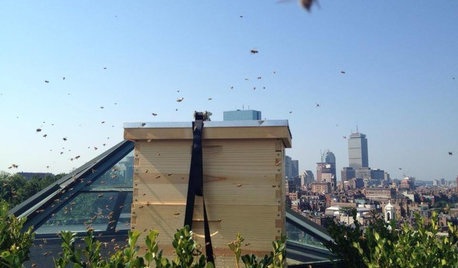
FARM YOUR YARDHello, Honey: Beekeeping Anywhere for Fun, Food and Good Deeds
We need pollinators, and they increasingly need us too. Here, why and how to be a bee friend
Full Story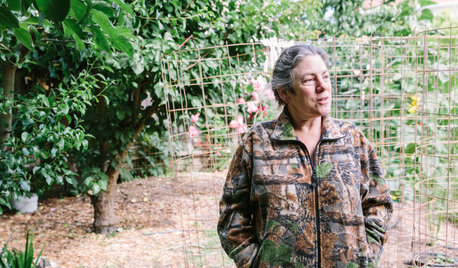
FARM YOUR YARDTo Get the Food They Believe In, These Urbanites Grow Their Own
Home gardeners farming on their city lots find that local, organic food isn’t the only reward
Full Story
REMODELING GUIDESEnergy-Efficient Windows: Decipher the Ratings
To choose the right energy-efficient windows for your home, first you need to know what the labels mean
Full Story
LIFE10 Smart Organizing Ideas That Make Life Easier
Rethink where and how you store household basics, from bills to baking supplies, to buy some time and save some headaches
Full Story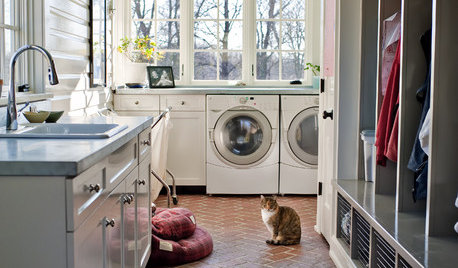
LAUNDRY ROOMSGet More From a Multipurpose Laundry Room
Laundry plus bill paying? Sign us up. Plus a potting area? We dig it. See how multiuse laundry rooms work harder and smarter for you
Full Story
LANDSCAPE DESIGNGet Along With Less Lawn — Ideas to Save Water and Effort
Ditch the mower and lower your water bill while creating a feast for the eyes with diverse plantings and gathering places
Full Story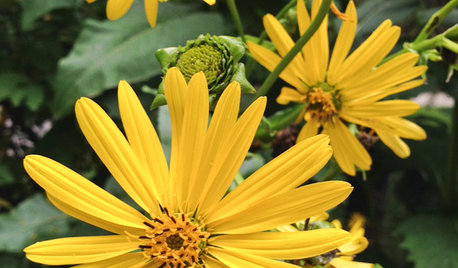
GARDENING GUIDESGreat Design Plant: Silphium Perfoliatum Pleases Wildlife
Cup plant provides structure, cover, food and water to help attract and sustain wildlife in the eastern North American garden
Full Story
GARDENING GUIDESUnleash Your Guerilla Gardener
Toss some seed bombs around the yard for easy, beneficial plantings
Full Story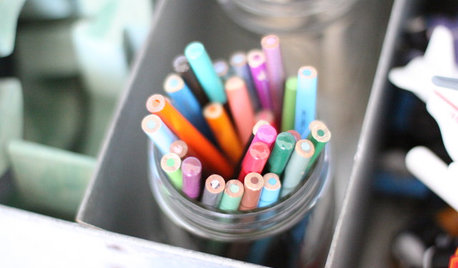
DECLUTTERINGDecorate with Intention: Clutter Clearing 101
Fearlessly face disorganized areas to find the home of your dreams
Full Story
MODERN STYLEModern Icons: Missoni Textiles
Excited by Target's new Missoni line? See what else this venerated fashion house has to offer
Full StorySponsored
Your Custom Bath Designers & Remodelers in Columbus I 10X Best Houzz



plllog